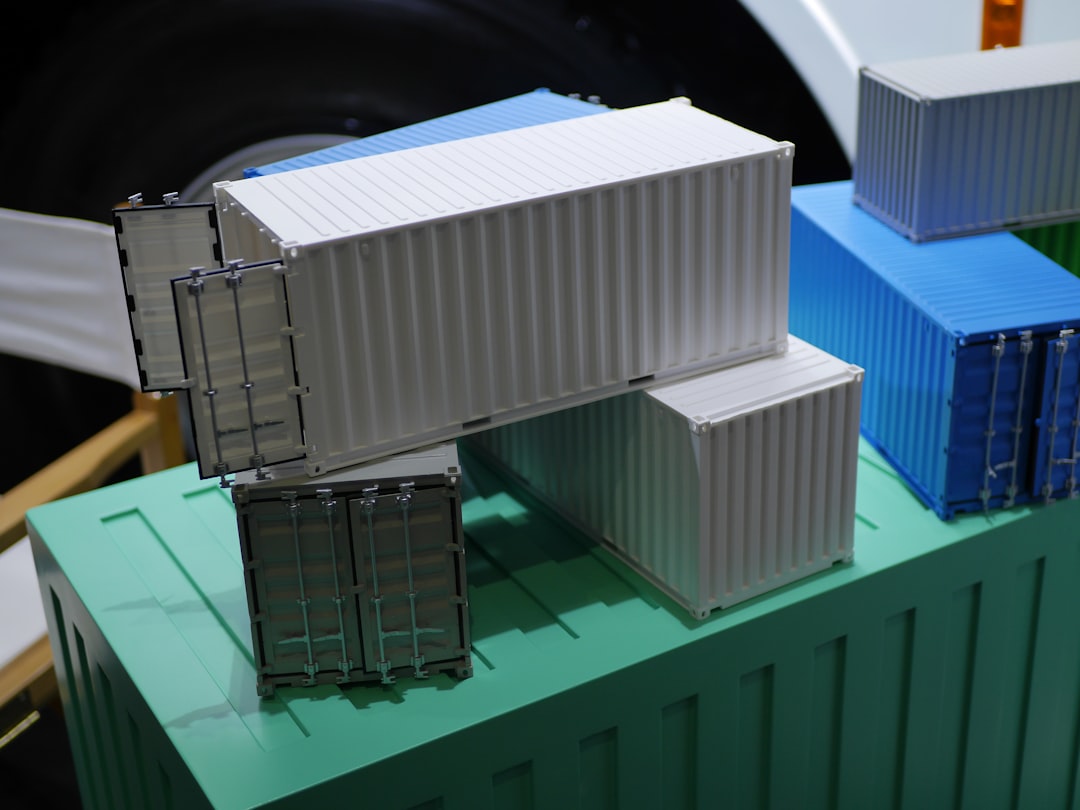Scalable Virtualization & Container Platforms | Virtacontainer.com
Discover a curated collection of free virtualization and container platforms for IT professionals, DevOps engineers, and businesses. Whether you are managing cloud servers, testing applications, or deploying microservices, virtacontainer.com combines tools and expert guidance to help you succeed.

Virtualization & Container Software Solutions | Virtacontainer.com
At virtacontainer.com, you will find a complete catalog of free virtualization and container tools, all gathered in one place. The collection includes VM hypervisors, container runtimes, orchestration platforms, and monitoring utilities.

vSphere Hypervisor (ESXi) — VMware’s bare-metal layer What it is ESXi, officially called vSphere Hypervisor, is VMware’s bare-metal hypervisor. You install it straight on the server, no Linux or Windows host underneath. For many datacenters it’s the base layer: stable, predictable, and designed to integrate with the rest of VMware’s stack (vCenter, vMotion, HA, DRS). Free to download, but the good stuff (central management, clustering, API writes) comes only with licenses.

oVirt — upstream virtualization for Red Hat shops What it is oVirt is the community project behind Red Hat Virtualization (RHV). At the core it’s just KVM + libvirt, but with a full management layer wrapped around it. Think of it as “vCenter, but open source and Red Hat flavored.” It’s heavier than Proxmox, but it has been running in production datacenters for years where admins wanted VMware-like features without VMware licensing.

Xen Project — bare-metal hypervisor that refuses to die What it is Xen Project is a type-1 hypervisor that’s been in use for more than 20 years. It started as an academic experiment in Cambridge, later became the base for many VPS platforms, and even powered AWS EC2 for years. Today it’s still maintained under the Linux Foundation. Not as trendy as KVM, but still useful if you need a small, security-focused hypervisor or want to separate workloads at the hardware level.

Windows Sandbox — disposable Windows environment for safe testing What it is Windows Sandbox is a feature built into modern Windows (Pro and Enterprise editions, from Windows 10 1903 onward). It provides a temporary, isolated environment that runs a clean Windows instance on demand. The main idea is simple: you launch Sandbox, test or run something risky, then close it — and everything inside is discarded. No need to spin up a full VM manually or reinstall the OS after running untrusted software

Virtuozzo — mix of containers and VMs with hosting DNA What it is Virtuozzo has its roots in OpenVZ, the old Linux container project. Over time it turned into a commercial platform used by hosting providers to sell VPS long before Docker became a buzzword. Today it combines two approaches: lightweight containers for density and KVM-based virtual machines when you need a full kernel. That mix is what made it popular in the service-provider world.

VirtualBox — cross-platform workhorse for labs and odd jobs What it is (short) VirtualBox is a type-2 hypervisor maintained by Oracle. It runs on Windows, Linux, macOS, and Solaris, and it spins up guest systems with minimal ceremony. Not the fastest thing on earth, and that’s fine; it’s the “it works everywhere” option that sticks around in classrooms, dev laptops, and compatibility test rigs.

oVirt — upstream virtualization for Red Hat shops What it is oVirt is the community project behind Red Hat Virtualization (RHV). At the core it’s just KVM + libvirt, but with a full management layer wrapped around it. Think of it as “vCenter, but open source and Red Hat flavored.” It’s heavier than Proxmox, but it has been running in production datacenters for years where admins wanted VMware-like features without VMware licensing.

VMware Workstation Player — simple desktop virtualization What it is VMware Workstation Player is the “entry-level” product in VMware’s desktop virtualization family. It runs virtual machines on top of Windows or Linux hosts, using the same hypervisor core that powers VMware’s bigger products. The difference is scope: Player is aimed at individuals, students, and IT staff who just need to run a few VMs, not manage whole labs with snapshots and automation. It’s free for personal use, though comme

Virt-Manager — GUI for libvirt-based virtualization What it is Virt-Manager (Virtual Machine Manager) is basically a desktop front-end to libvirt. Instead of living in the terminal and typing virsh commands, you get a simple GTK interface to launch and control VMs. It doesn’t try to be Proxmox or OpenStack — it’s just a local/remote manager for KVM, QEMU, and Xen. For Linux admins, it’s often the “quick tool” to spin up or troubleshoot a VM without building a whole stack around it.

VMStack — practical notes on a small virtualization stack What it is VMStack shows up in places where a full OpenStack would be overkill and VMware is out of budget. It’s basically a thin layer around KVM/QEMU with a web panel, some storage integration, and clustering logic. Not a giant ecosystem, not a “cloud in a box,” more like: just enough to get VMs running and keep them manageable.

UTM (macOS port on Windows) — QEMU with a user-friendly face What it is UTM started as a virtualization app for macOS, wrapping QEMU with a clean UI so that Apple users didn’t have to fight with long command lines. Over time, it was ported to Windows, giving administrators and developers a way to run QEMU-based VMs on that platform too. The core remains QEMU, but UTM handles machine profiles, storage, and configuration in a way that feels approachable. For many, it’s a bridge: the flexibility of

OpenStack — cloud toolkit that grew into an ecosystem What it is OpenStack started as a joint effort (NASA + Rackspace) and over the years turned into a whole collection of projects bundled together. It isn’t a single product — more like a toolbox for building a private or public IaaS cloud. At its heart it spins up VMs, wires up virtual networks, and attaches storage, but once you start digging you find dashboards, APIs, orchestration engines, image catalogs, identity services… the list goes on

SmartOS — Illumos core with zones, KVM and DTrace What it is SmartOS sits in a strange but useful corner of the virtualization world. It’s not a Linux distribution, not really a desktop OS either — it’s a hypervisor built on the Illumos kernel. The idea is simple: boot a minimal image into memory, leave almost nothing on disk, and then carve up the machine into lightweight zones or full KVM guests. People who’ve worked with it often describe it as “Solaris DNA with a cloud mindset.”

Rancher — managing Kubernetes without drowning in clusters What it is Kubernetes on its own is powerful, but once there are more than a couple of clusters, things quickly turn messy. Context switching, RBAC drift, scattered monitoring — every admin knows the pain. Rancher was created to fix that. Instead of being “yet another Kubernetes flavor,” it sits on top and provides a control point: a single interface where clusters from AWS, GCP, VMware, or even tiny edge nodes can be seen and managed as

QEMU — flexible emulator that doubles as a hypervisor What it is QEMU is one of those tools that show up almost everywhere in infrastructure work. It can behave like a classic emulator, running operating systems meant for completely different processors, or switch roles and act as a fast virtualizer when hardware acceleration is available. Admins often describe it as the “one box that boots anything,” and that reputation is fairly accurate. Whether it’s testing software for ARM or keeping an old

Proxmox VE — Notes from the Field What it is Proxmox VE is a Debian-based platform that mixes two things: full virtualization with KVM and system containers with LXC. It’s open source, free to run, and gives a web console out of the box. For many admins it became the default “home lab to small datacenter” stack — simple to set up, but with clustering and backups built in.

Portainer CE — Notes from Practice What it is Portainer Community Edition (CE) is a lightweight web dashboard for managing containers and clusters. It runs itself as a container and connects to Docker, Swarm, or Kubernetes. The goal is simple: give admins a clear UI to start, stop, and inspect workloads without typing every command in the shell.

Podman — Containers Without the Daemon What it is Podman is a container engine designed as a drop-in replacement for Docker, but with a different architecture. The big difference: no central daemon. Each container runs as a regular process, which makes it easier to secure and to integrate with systemd. It follows the OCI (Open Container Initiative) standards, so images and commands look almost the same as Docker’s.

Parallels Desktop — Running Windows on a Mac Without Reboot What it is Parallels Desktop is a hypervisor for macOS. It’s mainly used by Mac owners who need Windows or Linux side by side with macOS. The idea is simple: one machine, multiple systems, no reboot. For developers and IT staff living in Apple’s ecosystem, it often becomes the easiest way to keep access to Windows-only apps.

OpenVZ — Container Virtualization for Linux What it is OpenVZ is one of the earliest Linux container solutions. Long before Docker became a standard, OpenVZ was used by hosting providers to give users isolated Linux environments on a shared kernel. Each container (called a Virtual Private Server, VPS) behaves like a standalone Linux system but shares the host kernel.

OpenNebula — Lightweight Private Cloud Platform What it is OpenNebula is an open-source platform for building private and hybrid clouds. It’s not as heavy as OpenStack, but gives admins enough to manage VMs, storage, and networks across clusters. Many use it when they want a cloud-like interface for their virtualization but without the overhead of a massive stack.

Nomad — Scheduler Without the Extra Baggage What it is Nomad is HashiCorp’s cluster scheduler. Its job is narrow: take a workload and decide where it should run. No complex layers, no endless plugins. It doesn’t try to be Kubernetes — and that’s the point. You drop in a job, Nomad finds a host, and the thing runs.

Multipass — Notes from the Field What it is Multipass is Canonical’s small utility for spinning up Ubuntu VMs with almost no effort. It’s not a heavy virtualization manager, more like a “launchpad” for quick disposable machines. Developers often call it their local cloud-in-a-box: type a command, get a clean Ubuntu instance, use it, then throw it away.

Minikube — Notes on Running Kubernetes Locally What it is Minikube is the quickest way to get Kubernetes running on a laptop. It’s basically a single-node cluster in a VM or container. Good for testing, demos, or just learning the basics. Nobody uses it for production, but for training and local dev it shows up everywhere.

LXD — Next-Level Management for Linux Containers What it is LXD builds on top of LXC. Where LXC gives low-level tools to start and stop containers, LXD adds a daemon, REST API, and cluster features. Think of it as “LXC with batteries included.” With LXD, containers can be managed remotely, launched from image servers, and even live-migrated between hosts. For many admins it feels like managing lightweight VMs — same commands to launch, snapshot, copy, or migrate.

LXC — System-Level Containers on Linux (practical notes) What it is LXC provides operating-system–level virtualization using the Linux kernel’s namespaces and cgroups. There is no guest kernel boot, so containers start very fast and share the host kernel. In practice it is used for lightweight isolation, quick testing, and small services where a full VM would be excessive. LXC stays close to the Linux layer and is script-friendly, which appeals to admins who prefer low-level control instead of l

Kimchi — Web Console for KVM Management What it is Kimchi is a web-based management interface built for KVM. It was designed to make basic virtualization tasks easier without forcing admins into virsh or virt-manager. Think of it as a lightweight dashboard: you log into a browser, see your VMs, start or stop them, and adjust basic settings. It’s not a full enterprise orchestrator, but for single hosts or small setups it’s quick and simple.

Kimchi — Web Console for KVM Management What it is Kimchi is a web-based management interface built for KVM. It was designed to make basic virtualization tasks easier without forcing admins into virsh or virt-manager. Think of it as a lightweight dashboard: you log into a browser, see your VMs, start or stop them, and adjust basic settings. It’s not a full enterprise orchestrator, but for single hosts or small setups it’s quick and simple.

Kata Containers — Field Notes Why people use it In shared clusters, plain containers sometimes feel too “open.” Namespaces and cgroups isolate a lot, but the kernel is still shared. Kata tries to fix that by dropping a tiny VM between the workload and the host. From the outside it behaves like a normal container. From the inside it’s a small VM with its own kernel.

KVM + Cockpit — Notes from Real Use First look KVM has been part of the Linux kernel for a long time. It turns a normal Linux box into a hypervisor without extra software. Performance is usually close to bare metal. The tricky part is management: by default you get libvirt and command-line tools, which are powerful but not always friendly. That’s where Cockpit helps. It’s a lightweight web console that shows VMs, graphs of CPU/memory, and lets you control the host through a browser.

Hyper-V — Notes from the Field First impressions In many Windows shops Hyper-V appears not because someone planned a big virtualization rollout, but simply because it’s already there. On a fresh Windows Server install the role can be added in a few clicks, no extra licenses to buy. Same thing on Windows 10/11 Pro or Enterprise — tick the box, reboot, and the host becomes a hypervisor. That low entry barrier explains why Hyper-V is common even in small networks.

Hyper-V — Notes from the Field First impressions In many Windows shops Hyper-V appears not because someone planned a big virtualization rollout, but simply because it’s already there. On a fresh Windows Server install the role can be added in a few clicks, no extra licenses to buy. Same thing on Windows 10/11 Pro or Enterprise — tick the box, reboot, and the host becomes a hypervisor. That low entry barrier explains why Hyper-V is common even in small networks.

Harvester — Virtual Machines and Containers in One Cluster What it is Harvester is an open-source hyperconverged platform. It brings together two pieces that usually live apart: Kubernetes for containers and KVM for virtual machines. Instead of running a VM farm next to a Kubernetes cluster, both workloads run on the same nodes with one control plane. For administrators this reduces duplicated infrastructure and makes mixed setups easier to run.

Docker Desktop — Everyday Container Platform for Windows and macOS What it is Docker Desktop is basically the easiest way to get containers running on non-Linux machines. Instead of fighting with manual installs, it gives one package: the Docker Engine, CLI tools, Compose, and an optional local Kubernetes. On Windows and macOS this matters, because containers still need a Linux kernel behind the scenes, and Desktop hides that part. For admins it is often the quickest route to mirror production s

BlueStacks 5 — Running Android Apps on Windows Machines What it is BlueStacks 5 is not a full hypervisor but rather an Android runtime that behaves close to one. It allows Windows hosts to run Android apps without physical phones or tablets. In practice, it shows up in IT labs and QA teams where there is a need to test mobile builds, simulate support cases, or automate tasks inside mobile-only software. It is lighter to roll out than a full Android Studio setup and easier to control at scale.

K3s and MicroK8s — Lightweight Kubernetes Variants Why they exist Not every setup needs a full-scale Kubernetes cluster with all components turned on. Sometimes it’s just a couple of small nodes at the edge, or a developer’s laptop that needs a local cluster for testing. That’s where K3s and MicroK8s step in. Both are CNCF-certified, so the APIs are the same, but the packaging and philosophy are different.
About Virtacontainer
Virtacontainer.com is a dedicated platform for virtualization and container technologies. We provide a curated collection of free software that empowers IT professionals, DevOps engineers, and businesses to modernize their infrastructure.
Our project delivers value to small businesses seeking affordable virtualization, startups experimenting with container-based applications, and enterprises scaling their cloud-native environments. By collecting free and trusted solutions, we make it possible to adopt virtualization and containerization without costly licenses.
Categories covered include VM managers, container runtimes, orchestration frameworks, monitoring dashboards, hybrid cloud tools, and container security utilities. Each solution is tested for usability and performance in real-world deployments.
What makes us unique is the combination of free tools and professional support. Our team helps with installation, integration, and optimization of virtualization and container platforms. From testing environments to enterprise production clusters, we ensure your systems are reliable, secure, and scalable.
With virtacontainer.com, you gain more than free tools — you gain a trusted partner in building next-generation IT infrastructure.

Latest in AI & Business
virtual machine software: Complete Technical Guide
Podman, a popular virtual machine software, has been gaining traction in the world of virtualization and container infrastructure. In this comprehensive guide, we will delve into the world of Podman, exploring its features, benefits, and practical configuration tips. Whether you are a seasoned IT professional or just starting out, this article will provide you with a beginner-friendly introduction to Podman virtualization.
Understanding Podman and Its Architecture
Podman is a free and open-source virtual machine software that allows users to run and manage containers on their local machine. It was created as a daemon-less alternative to Docker, providing a more secure and lightweight solution for containerization. Podman’s architecture is based on a client-server model, where the client is used to interact with the server, which manages the containers.
One of the key features of Podman is its ability to run rootless containers, which means that containers can be run without root privileges. This provides an additional layer of security, as containers are isolated from the host system and cannot access sensitive resources.
Podman vs Docker: A Comparison
Podman and Docker are two popular containerization platforms, each with their own strengths and weaknesses. In this section, we will compare and contrast the two, highlighting their key differences.
| Feature | Podman | Docker |
|---|---|---|
| Daemon-less | Yes | No |
| Rootless Containers | Yes | No |
| Security | More secure due to rootless containers | Less secure due to daemon-based architecture |
As can be seen from the table above, Podman offers several advantages over Docker, including its daemon-less architecture and rootless containers. However, Docker still remains a popular choice due to its widespread adoption and large community of users.
Setting Up a Cloud Lab with Podman
In this section, we will provide a step-by-step guide to setting up a cloud lab with Podman. This will involve installing Podman, creating a container, and configuring the network.
Step 1: Install Podman
- Download the Podman installation package from the official website
- Follow the installation instructions for your specific operating system
Step 2: Create a Container
- Use the `podman create` command to create a new container
- Specify the image and any additional options as needed
Step 3: Configure the Network
- Use the `podman network` command to create a new network
- Specify the network settings and any additional options as needed
Advanced Podman Features
In this section, we will explore some of the advanced features of Podman, including its support for Kubernetes and its built-in monitoring tools.
Podman supports Kubernetes out of the box, allowing users to deploy and manage containerized applications at scale. Additionally, Podman provides a range of built-in monitoring tools, including support for Prometheus and Grafana.
| Feature | Podman | Kubernetes |
|---|---|---|
| Container Orchestration | Yes | Yes |
| Monitoring Tools | Yes | Yes |
| Scalability | High | High |
As can be seen from the table above, Podman offers a range of advanced features that make it an attractive choice for containerization and virtualization. Its support for Kubernetes and built-in monitoring tools make it an ideal choice for large-scale deployments.
Conclusion
In conclusion, Podman is a powerful virtual machine software that offers a range of features and benefits for containerization and virtualization. Its daemon-less architecture, rootless containers, and support for Kubernetes make it an attractive choice for users of all levels. Whether you are just starting out or are a seasoned IT professional, Podman is definitely worth considering for your virtualization needs.
virtual machine software: Comprehensive Configuration and Usage Guide
Parallels Desktop is a powerful virtual machine software that allows users to run multiple operating systems on a single computer. It is widely used by developers, IT professionals, and individuals who need to test and deploy applications in different environments. In this article, we will explore the key features, system requirements, setup steps, and best-practice use cases for Parallels Desktop.
Key Features and Capabilities
Parallels Desktop offers a range of features that make it an ideal virtual machine software for various use cases. Some of the key features include:
- Support for multiple operating systems: Parallels Desktop supports a wide range of operating systems, including Windows, macOS, Linux, and Chrome OS.
- High-performance virtualization: Parallels Desktop uses advanced virtualization technology to deliver high-performance and responsive virtual machines.
- Seamless integration with Mac: Parallels Desktop integrates seamlessly with Mac, allowing users to run Windows and other operating systems alongside macOS.
- Easy setup and configuration: Parallels Desktop offers a user-friendly interface that makes it easy to set up and configure virtual machines.
These features make Parallels Desktop an ideal solution for developers, IT professionals, and individuals who need to test and deploy applications in different environments.
System Requirements and Setup Steps
To use Parallels Desktop, you need to meet the following system requirements:
| Hardware Requirements | Minimum Requirements | Recommended Requirements |
|---|---|---|
| Processor | Intel Core 2 Duo or later | Intel Core i5 or later |
| Memory | 4 GB RAM | 8 GB RAM or more |
| Storage | 256 GB free disk space | 512 GB free disk space or more |
Once you have met the system requirements, you can follow these setup steps to get started with Parallels Desktop:
- Download and install Parallels Desktop from the official website.
- Launch Parallels Desktop and follow the on-screen instructions to set up your first virtual machine.
- Choose the operating system you want to install and follow the prompts to complete the installation process.
- Configure your virtual machine settings, such as memory, processor, and storage.
- Start your virtual machine and begin using it like a physical computer.
Best-Practice Use Cases for Parallels Desktop
Parallels Desktop is a versatile virtual machine software that can be used in a variety of scenarios. Here are some best-practice use cases for Parallels Desktop:
| Use Case | Description |
|---|---|
| Development and testing | Use Parallels Desktop to test and deploy applications in different environments, such as Windows and macOS. |
| IT and support | Use Parallels Desktop to provide technical support and training to employees, or to test and deploy software in different environments. |
| Personal use | Use Parallels Desktop to run multiple operating systems on a single computer, or to test and deploy applications in different environments. |
These use cases demonstrate the versatility and flexibility of Parallels Desktop as a virtual machine software.
Comparison with Other Virtual Machine Software
Parallels Desktop is not the only virtual machine software available on the market. Here is a comparison with other popular virtual machine software:
| Virtual Machine Software | Key Features | Pricing |
|---|---|---|
| Parallels Desktop | Support for multiple operating systems, high-performance virtualization, seamless integration with Mac | Starting at $79.99/year |
| VMware Fusion | Support for multiple operating systems, high-performance virtualization, easy setup and configuration | Starting at $79.99/year |
| VirtualBox | Support for multiple operating systems, high-performance virtualization, free and open-source | Free |
This comparison highlights the key features and pricing of Parallels Desktop and other popular virtual machine software.
Parallels Desktop is a powerful virtual machine software that offers a range of features and capabilities that make it an ideal solution for developers, IT professionals, and individuals who need to test and deploy applications in different environments. With its high-performance virtualization, seamless integration with Mac, and easy setup and configuration, Parallels Desktop is a popular choice among users. Whether you are a developer, IT professional, or individual user, Parallels Desktop is a versatile virtual machine software that can meet your needs.
multipass: Simplifying Virtualization and Container Management
Multipass is a powerful tool for virtualization and container management, allowing developers to easily create and manage virtual machines and environments for testing, development, and deployment. In this article, we will explore how to use Multipass for virtualization, its key features, and provide a full overview of its capabilities.
Understanding the Basics of Multipass
Multipass is a command-line tool that allows users to create and manage virtual machines (VMs) on their local machine. It provides a simple and efficient way to create isolated environments for testing, development, and deployment. With Multipass, users can create VMs with specific configurations, such as CPU, memory, and disk space, and manage them using a simple command-line interface.
Multipass supports a wide range of operating systems, including Ubuntu, CentOS, and Windows, and can be used on various platforms, including Linux, macOS, and Windows.
Key Features of Multipass
Multipass offers a range of features that make it an ideal tool for virtualization and container management. Some of its key features include:
- Easy VM creation: Multipass allows users to create VMs with specific configurations using a simple command-line interface.
- Isolated environments: Multipass provides isolated environments for testing, development, and deployment, ensuring that each environment is separate and secure.
- Resource management: Multipass allows users to manage resources such as CPU, memory, and disk space for each VM.
- Networking support: Multipass provides networking support, allowing users to connect VMs to the internet or other networks.
Configuring Multipass for Cloud Lab Setup
Multipass can be used to set up a cloud lab environment for testing and development. Here’s an example of how to configure Multipass for a cloud lab setup:
First, install Multipass on your local machine using the following command:
sudo snap install multipass
Next, create a new VM using the following command:
multipass launch --name my-vm --cpus 2 --mem 4G --disk 20G
This will create a new VM with 2 CPUs, 4GB of memory, and a 20GB disk. You can then configure the VM as needed, such as installing software or configuring networking.
Comparison of Multipass with Other Virtualization Tools
| Feature | Multipass | VirtualBox | VMware |
|---|---|---|---|
| Easy VM creation | Yes | No | No |
| Isolated environments | Yes | Yes | Yes |
| Resource management | Yes | Yes | Yes |
| Networking support | Yes | Yes | Yes |
Using Multipass with Kubernetes Dev Tools
Multipass can be used with Kubernetes dev tools, such as Minikube, to create a local Kubernetes environment for testing and development. Here’s an example of how to use Multipass with Minikube:
First, install Minikube on your local machine using the following command:
curl -Lo minikube https://storage.googleapis.com/minikube/releases/latest/minikube-linux-amd64 && chmod +x minikube && sudo mv minikube /usr/local/bin/
Next, create a new VM using Multipass and configure it as a Kubernetes node:
multipass launch --name my-vm --cpus 2 --mem 4G --disk 20G
minikube start --vm-driver=none --apiserver-ips=192.168.99.100
This will create a new VM with 2 CPUs, 4GB of memory, and a 20GB disk, and configure it as a Kubernetes node using Minikube.
Comparison of Multipass with Other Container Management Tools
| Feature | Multipass | Docker | Kubernetes |
|---|---|---|---|
| Easy container creation | Yes | Yes | No |
| Isolated environments | Yes | Yes | Yes |
| Resource management | Yes | Yes | Yes |
| Networking support | Yes | Yes | Yes |
free-openvz: Unlocking the Full Potential of Virtualization
OpenVZ is a powerful and popular virtualization and containerization solution that offers a robust and scalable platform for deploying and managing virtual private servers (VPS). In this comprehensive guide, we will delve into the key features, system requirements, setup steps, and best-practice use cases for OpenVZ, providing you with a thorough understanding of how to harness its capabilities for your virtualization needs.
Understanding the OpenVZ Architecture
OpenVZ is built on top of the Linux kernel and utilizes a unique architecture that allows for the creation of multiple isolated containers on a single physical server. Each container, also known as a VPS, runs its own instance of the operating system and has its own allocated resources, such as CPU, memory, and storage.
This architecture provides several benefits, including improved resource utilization, increased security, and enhanced flexibility. With OpenVZ, you can create multiple containers on a single physical server, each with its own customized configuration and settings.
Key Components of OpenVZ
- Kernel: The Linux kernel provides the foundation for OpenVZ, allowing for the creation of containers and management of resources.
- Container Management: The OpenVZ container management system provides a robust and scalable platform for creating, managing, and monitoring containers.
- Resource Management: OpenVZ provides a comprehensive resource management system that allows for the allocation and management of resources, such as CPU, memory, and storage.
System Requirements and Setup
To get started with OpenVZ, you will need to ensure that your system meets the minimum requirements. These include:
- Hardware: A 64-bit CPU, at least 2 GB of RAM, and a minimum of 10 GB of disk space.
- Operating System: A 64-bit Linux distribution, such as CentOS or Ubuntu.
Once you have confirmed that your system meets the requirements, you can proceed with the setup process. This involves installing the OpenVZ kernel and container management software, configuring the network and storage settings, and creating your first container.
Comparison with Other Virtualization Solutions
OpenVZ is often compared to other virtualization solutions, such as KVM and Xen. While each solution has its own strengths and weaknesses, OpenVZ offers several unique benefits, including:
| Feature | OpenVZ | KVM | Xen |
|---|---|---|---|
| Containerization | Yes | No | No |
| Resource Management | Comprehensive | Limited | Limited |
| Scalability | High | Medium | Low |
Best-Practice Use Cases for OpenVZ
OpenVZ is a versatile virtualization solution that can be used in a variety of scenarios, including:
- Web Hosting: OpenVZ provides a robust and scalable platform for hosting multiple websites on a single physical server.
- Cloud Computing: OpenVZ can be used to create a cloud computing environment, allowing users to deploy and manage virtual machines on-demand.
- Development and Testing: OpenVZ provides a flexible and isolated environment for developers to test and deploy applications.
| Use Case | Benefits |
|---|---|
| Web Hosting | Improved resource utilization, increased security, and enhanced flexibility. |
| Cloud Computing | Scalability, on-demand deployment, and reduced costs. |
| Development and Testing | Isolated environment, flexible configuration, and reduced costs. |
Conclusion
In conclusion, OpenVZ is a powerful and versatile virtualization solution that offers a robust and scalable platform for deploying and managing virtual private servers. With its comprehensive resource management system, high scalability, and flexible configuration options, OpenVZ is an ideal solution for a variety of use cases, including web hosting, cloud computing, and development and testing.
| Feature | OpenVZ | Kubernetes Dev Tools |
|---|---|---|
| Containerization | Yes | Yes |
| Resource Management | Comprehensive | Limited |
| Scalability | High | Medium |
free-portainer: Simplifying Container Management for Developers and IT Teams
Portainer CE is a popular, open-source platform for managing containers and virtual machines. As a beginner-friendly solution, it offers a user-friendly interface and robust features to streamline container management tasks. In this article, we will explore the key features and benefits of using Portainer CE, as well as provide a step-by-step guide to installation and configuration.
Understanding Portainer CE and its Benefits
Portainer CE is a powerful tool for managing container workloads, VMs, and clusters. It provides a single-pane-of-glass interface for monitoring and managing multiple environments, making it an ideal solution for developers, IT teams, and DevOps professionals. With Portainer CE, users can easily deploy, manage, and scale containerized applications, as well as monitor performance and troubleshoot issues.
Key Features of Portainer CE
- Multi-environment support: Manage multiple environments, including Docker, Kubernetes, and VMs, from a single interface.
- Container management: Easily deploy, manage, and scale containerized applications.
- Monitoring and logging: Monitor performance and troubleshoot issues with real-time logging and metrics.
- Role-based access control: Securely manage access to environments and resources with fine-grained access control.
Installation and Configuration of Portainer CE
The installation process for Portainer CE is relatively straightforward. Here are the general steps:
- Download the Portainer CE installation package from the official website.
- Extract the package to a directory on your system.
- Run the installation script to install Portainer CE.
- Configure the Portainer CE environment by specifying the environment type, container runtime, and other settings.
Once installed and configured, you can access the Portainer CE web interface by navigating to http://localhost:9000 in your web browser.
Performance Recommendations for Portainer CE
To ensure optimal performance, follow these best practices:
- Use a supported container runtime, such as Docker or Kubernetes.
- Configure resource limits and requests for containers and pods.
- Monitor performance metrics and adjust settings as needed.
| Feature | Portainer CE | Other Container Management Tools |
|---|---|---|
| Multi-environment support | Yes | No |
| Container management | Yes | Yes |
| Monitoring and logging | Yes | No |
| Role-based access control | Yes | No |
Comparison with Other Kubernetes Dev Tools
Portainer CE is a powerful tool for managing container workloads and VMs. Here’s how it compares to other Kubernetes dev tools:
| Feature | Portainer CE | Kubernetes Dashboard | Rancher |
|---|---|---|---|
| Multi-environment support | Yes | No | Yes |
| Container management | Yes | Yes | Yes |
| Monitoring and logging | Yes | No | Yes |
| Role-based access control | Yes | No | Yes |
VM Manager Comparison
Portainer CE also offers robust VM management features. Here’s how it compares to other VM managers:
| Feature | Portainer CE | VMware vSphere | VirtualBox |
|---|---|---|---|
| Multi-VM support | Yes | Yes | Yes |
| VM management | Yes | Yes | Yes |
| Monitoring and logging | Yes | Yes | No |
| Role-based access control | Yes | Yes | No |
Portainer CE is a powerful tool for managing container workloads, VMs, and clusters. Its user-friendly interface and robust features make it an ideal solution for developers, IT teams, and DevOps professionals. With its multi-environment support, container management, monitoring and logging, and role-based access control, Portainer CE is a great choice for anyone looking to simplify container management tasks.
free-kata: Unlocking Secure and Scalable Virtualization
Kata Containers is an open-source container runtime that provides a secure and scalable way to deploy containers. With its unique architecture, Kata Containers offers a flexible virtualization option for labs, cloud environments, and local testing. In this article, we will explore the capabilities, automation workflows, and supported platforms of Kata Containers, as well as provide a free deployment guide.
Virtualization and Containerization Overview
Virtualization and containerization are two popular technologies used to deploy and manage applications. Virtualization involves creating a virtual machine (VM) that runs its own operating system, while containerization involves packaging an application and its dependencies into a single container that can be run on a host operating system. Kata Containers combines the benefits of both technologies to provide a secure and scalable way to deploy containers.
Key Features of Kata Containers
- Secure**: Kata Containers provides a secure environment for containers to run, with features such as hardware-based isolation and secure boot.
- Scalable**: Kata Containers is designed to scale with large workloads, making it suitable for cloud and enterprise environments.
- Flexible**: Kata Containers supports a wide range of operating systems and architectures, making it a versatile solution for various use cases.
Automation Workflows and Deployment
Kata Containers provides a range of automation workflows and deployment options to make it easy to integrate with existing infrastructure. Some of the key features include:
- Integration with Kubernetes**: Kata Containers can be integrated with Kubernetes to provide a secure and scalable way to deploy containers.
- Support for Docker**: Kata Containers supports Docker containers, making it easy to deploy and manage containers.
- Automated deployment**: Kata Containers provides automated deployment options, making it easy to deploy containers at scale.
| Feature | Kata Containers | Docker | Virtual Machine Software |
|---|---|---|---|
| Security | Hardware-based isolation and secure boot | Software-based isolation | Hardware-based isolation |
| Scalability | Designed to scale with large workloads | Can be challenging to scale | Can be challenging to scale |
| Flexibility | Supports a wide range of operating systems and architectures | Supports a wide range of operating systems and architectures | Supports a limited range of operating systems and architectures |
Supported Platforms and Operating Systems
Kata Containers supports a wide range of platforms and operating systems, including:
- Linux**: Kata Containers supports a range of Linux distributions, including Ubuntu, CentOS, and Fedora.
- Windows**: Kata Containers supports Windows Server 2016 and later.
- macOS**: Kata Containers supports macOS 10.12 and later.
| Platform | Kata Containers | Docker | Virtual Machine Software |
|---|---|---|---|
| Linux | Supported | Supported | Supported |
| Windows | Supported | Supported | Supported |
| macOS | Supported | Supported | Not supported |
Conclusion
Kata Containers is a powerful tool for deploying secure and scalable containers. With its unique architecture and range of automation workflows and deployment options, Kata Containers is an ideal solution for cloud and enterprise environments. Whether you’re looking to deploy containers on a local machine or in a cloud environment, Kata Containers is a great option to consider.












